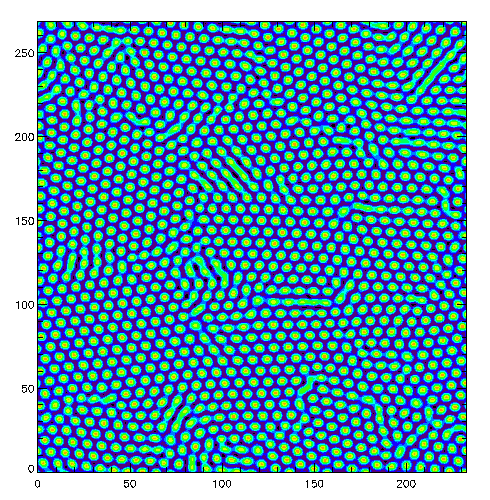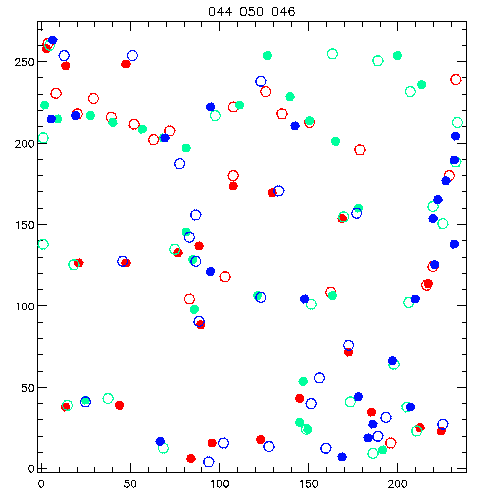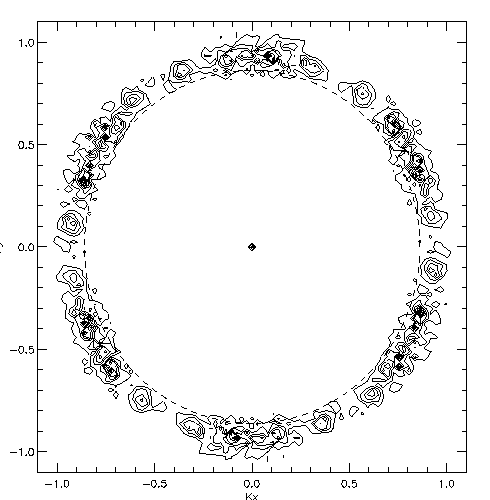Penta-Hepta Defect Chaos in a Model for Rotating Hexagonal Convection
Yuan-Nan Young and Hermann Riecke
In a model for rotating non-Boussinesq convection with
mean flow we identify a regime of spatio-temporal chaos that is based on a
hexagonal planform and is sustained by the induced nucleation of
dislocations by penta-hepta defects. The probability distribution function for
the number of defects deviates substantially from the usually observed
Poisson-type distribution. It implies strong correlations between the defects in
the form of density-dependent creation and annihilation rates of defects. We
extract these rates from the distribution function and also directly from the
defect dynamics.
Motivated by the strong effect of mean flows and rotation on convection roll
patterns, we have previously studied their effect on
the stability of hexagon patterns and their PHDs within the
framework of Ginzburg-Landau equations. Since the Ginzburg-Landau equations
break the isotropy of the system they
are not suited for investigations of spatio-temporal chaos. In this paper we
therefore investigate a minimal extension of the Swift-Hohenberg model,
|
|
|
|
Ry- (Ñ2+1)2y-y3+a (Ñy)2+
g |
^
e
|
z
|
·(Ñy×ÑDy)-U·Ñy, |
| |
|
|
|
^
e
|
z
|
·ÑDy×Ñy+d{( Dy)2+Ñy·ÑDy}, |
| |
|
|
|
If the equations above do not show up properly please follow
the instructions.
Snapshot of the patterns showing domains of hexagons with different orientation, along
the location of the dislocations extracted by demodulation (open/filled symbols denote
defects with opposite charge, color indicates the 3 modes) and the associated Fourier spectrum.
Movie of pattern evolution (12MB avi) (2.3MB mpg)
Movie of evolution of spectrum (5MB avi)
Movie of dynamics of defects (1.8MB avi)
  
|




